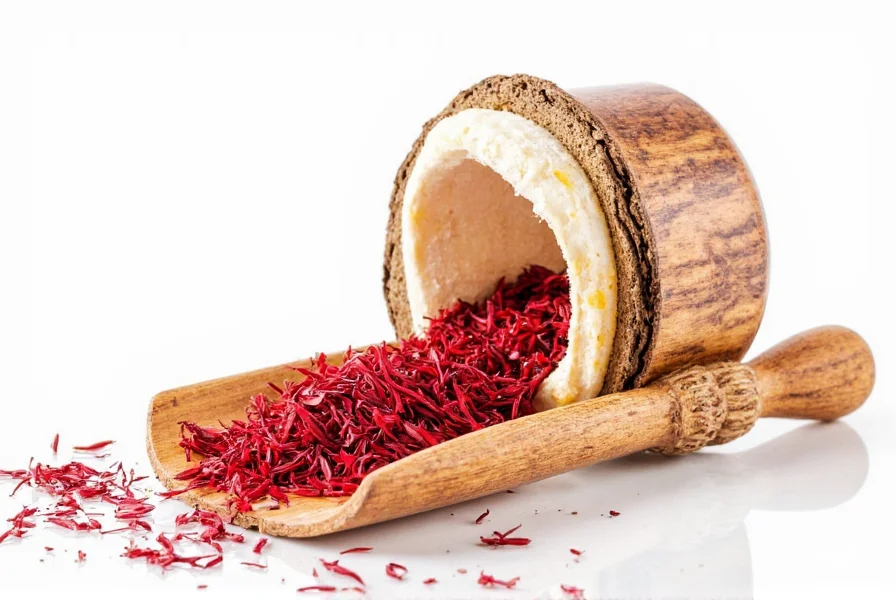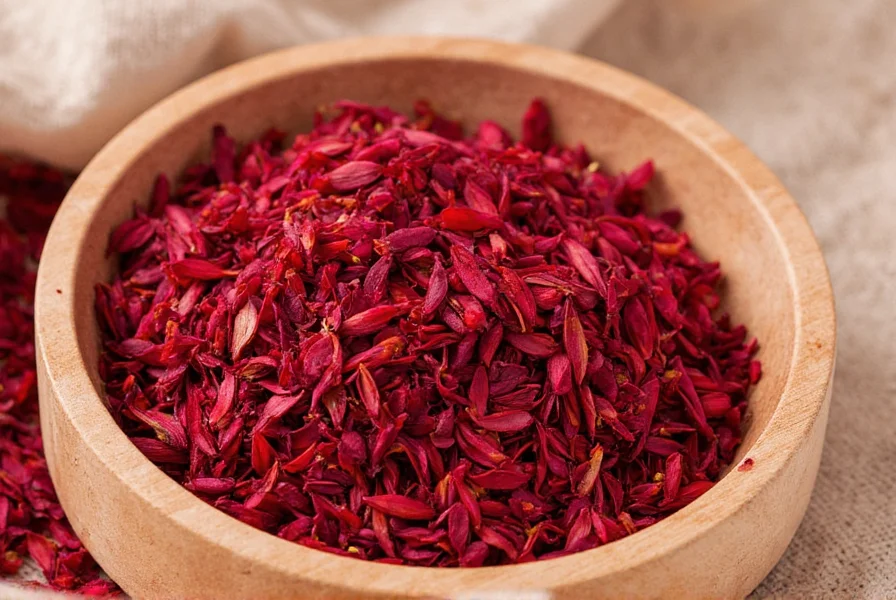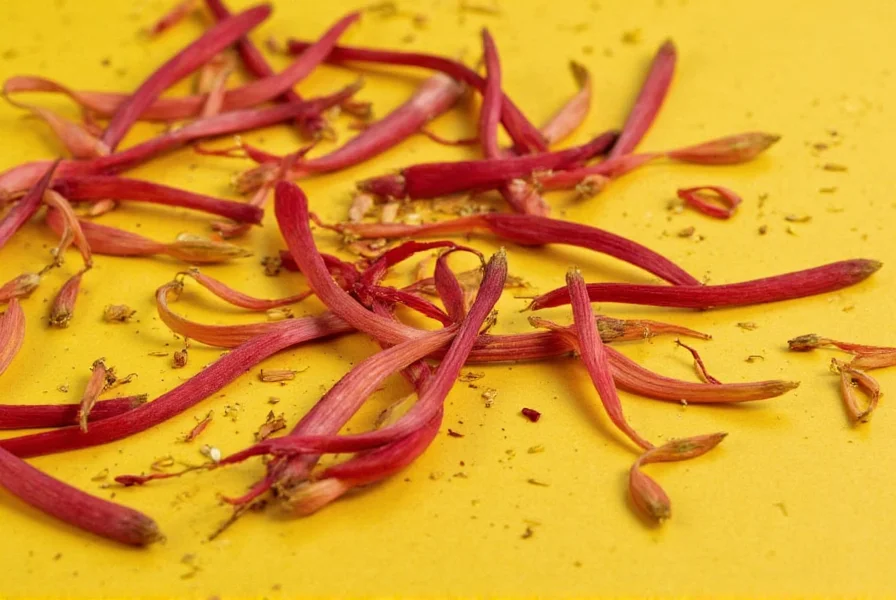When searching for the best saffron supplement, understanding what makes a quality product is essential. Saffron (Crocus sativus), one of the world's most expensive spices, has gained attention for its potential health benefits, particularly for mood regulation and eye health. However, not all saffron supplements deliver on their promises. This guide explains exactly what to look for based on current scientific evidence and quality standards.
Understanding Saffron's Active Compounds
Saffron's therapeutic effects come primarily from three key compounds: crocin, crocetin, and safranal. Crocin gives saffron its distinctive color and demonstrates potent antioxidant properties. Crocetin, a metabolite of crocin, shows promise for cognitive support. Safranal provides the characteristic aroma and contributes to mood-enhancing effects.
For a saffron supplement to be effective, it must contain sufficient concentrations of these compounds. Research indicates that standardized extracts containing at least 2% safranal, 2% crocin, and 0.3% crocetin produce measurable benefits. Lower concentrations often fail to deliver the effects documented in clinical studies.

What Makes a High-Quality Saffron Supplement
Several critical factors distinguish premium saffron supplements from inferior products:
Standardized Extract Concentration
The most reliable saffron supplements specify exact percentages of active compounds. Look for products clearly stating they contain standardized extracts with minimum percentages of crocin, crocetin, and safranal. Supplements that only list "saffron extract" without standardization details lack the consistency needed for reliable effects.
Purity and Sourcing
Authentic saffron comes exclusively from the red stigma of Crocus sativus flowers. Some manufacturers use yellow styles (the lower part of the stigma) or even safflower (often called "Mexican saffron") to cut costs. The best saffron supplements use only the red stigma and clearly state this on the label.
Third-Party Testing Verification
Reputable manufacturers subject their products to independent laboratory testing. Look for supplements with current Certificates of Analysis (CoAs) verifying:
- Actual concentrations of active compounds
- Absence of heavy metals and contaminants
- No adulteration with cheaper substitutes
| Quality Indicator | Acceptable Standard | Potential Red Flag |
|---|---|---|
| Crocin content | ≥2% | Not specified or <1% |
| Safranal content | ≥2% | Not specified or <1% |
| Crocetin content | ≥0.3% | Not specified |
| Third-party testing | Current CoA available | No verification provided |
| Daily dosage | 30 mg standardized extract | Excessive doses (100mg+) |
Evaluating Saffron Supplement Labels
Reading supplement labels carefully helps identify the best saffron supplement for your needs. Pay attention to these critical elements:
Standardization Details
The label should specify "standardized to X% [compound]." For example: "Saffron (Crocus sativus) extract (stigma), standardized to 2% safranal." Products without this information likely contain inconsistent amounts of active ingredients.
Ingredient Transparency
High-quality supplements list all ingredients clearly. Be cautious of products containing unnecessary fillers, artificial colors, or proprietary blends that hide exact amounts. The best saffron supplements typically contain only the standardized extract and minimal, clearly identified excipients.
Certifications
Look for certifications from independent organizations:
- USP (United States Pharmacopeia) verification
- NSF International certification
- ConsumerLab approval
- Non-GMO Project verification
- Organic certification (when applicable)
Effective Dosage Guidelines Based on Research
Clinical studies on saffron supplementation consistently use specific dosages:
- Mood support: 30 mg daily of standardized extract (2% safranal)
- Eye health: 20-30 mg daily of standardized extract
- PMS symptom relief: 30 mg twice daily
Higher doses don't necessarily provide additional benefits and may increase the risk of side effects. The best saffron supplement provides exactly 30 mg per serving of properly standardized extract.

Safety Considerations and Potential Interactions
Saffron is generally safe at recommended doses, but certain precautions apply:
Known Side Effects
At appropriate doses (≤100 mg daily), saffron typically causes few side effects. Some users report:
- Mild digestive upset
- Dry mouth
- Anxiety or restlessness (at higher doses)
Doses exceeding 1.5 grams daily may cause serious adverse effects, while 5+ grams could be potentially toxic. The best saffron supplement provides appropriate single-serving doses to prevent accidental overconsumption.
Medication Interactions
Saffron may interact with certain medications:
- Antidepressants: May enhance effects of SSRIs and other antidepressants
- Blood thinners: Theoretical interaction risk due to potential antiplatelet effects
- Sedatives: May enhance effects of CNS depressants
Consult your healthcare provider before using saffron supplements if you take prescription medications.
Who Should Avoid Saffron Supplements
Certain populations should exercise caution:
- Pregnant women (saffron may stimulate uterine contractions)
- Individuals with bipolar disorder (may trigger mania)
- People with known saffron allergy
- Those scheduled for surgery within two weeks
Making an Informed Choice: Selecting the Best Saffron Supplement
When evaluating options for the best saffron supplement, consider these practical factors:
Price vs. Quality Analysis
While premium saffron supplements cost more, extremely low prices often indicate inferior quality. Compare cost per daily serving rather than total package price. A quality 30 mg saffron supplement should cost approximately $0.50-$1.00 per serving.
Formulation Considerations
Saffron supplements come in various forms:
- Capsules: Most common, convenient, and mask saffron's strong flavor
- Tablets: May contain more binders but offer precise dosing
- Liquid extracts: Less common, may provide faster absorption
Capsules generally represent the best balance of quality, convenience, and effectiveness for most users seeking the best saffron supplement for mood support.
Research-Backed Brand Selection
Choose brands that:
- Cite specific research supporting their formulation
- Provide transparent CoAs for current batches
- Have scientific advisory boards with relevant expertise
- Focus on evidence-based supplement formulation
Avoid brands making exaggerated claims like "cures depression" or "replaces prescription medication"—these violate regulatory guidelines and indicate poor quality standards.
Frequently Asked Questions About Saffron Supplements
How long does it take for saffron supplements to work for mood support?
Most clinical studies show measurable improvements in mood within 4-6 weeks of consistent daily use at the standard 30 mg dose. Some users report subtle effects within 1-2 weeks, but full benefits typically require a month of regular supplementation. Research indicates saffron works gradually, similar to conventional antidepressants, rather than providing immediate effects.
Can I get enough saffron from tea or cooking to receive health benefits?
No, culinary use of saffron cannot provide therapeutic doses. It would require approximately 15-20 grams of saffron threads daily to match the 30 mg standardized extract dose used in studies—that's thousands of dollars worth of saffron per month. The concentration of active compounds in supplement form is necessary to achieve the effects documented in research on saffron for depression and eye health.
What's the difference between saffron extract and whole saffron supplements?
Saffron extract undergoes processing to concentrate the active compounds (crocin, crocetin, safranal), while whole saffron supplements contain ground saffron threads. Extracts provide standardized, consistent potency essential for therapeutic effects, whereas whole saffron products contain variable amounts of active ingredients. Research showing benefits for mood and eye health specifically used standardized extracts, not whole saffron.
Should I take saffron supplement with food or on an empty stomach?
For optimal absorption, take saffron supplements with a light meal or snack containing some fat. While saffron can be taken on an empty stomach, some users experience mild digestive discomfort. Taking it with food doesn't significantly reduce absorption of the active compounds but may improve tolerance. Consistency in timing (same time each day) matters more than whether it's taken with food.
How can I verify if my saffron supplement contains real saffron?
Check for a current Certificate of Analysis (CoA) from an independent lab that verifies crocin and safranal content. Real saffron supplements should contain measurable amounts of these compounds (minimum 2% each). You can also perform a simple home test: place a thread in warm water—authentic saffron will gradually release a golden-yellow color, while fake saffron (often made from safflower) releases color immediately and appears more orange-red.











 浙公网安备
33010002000092号
浙公网安备
33010002000092号 浙B2-20120091-4
浙B2-20120091-4